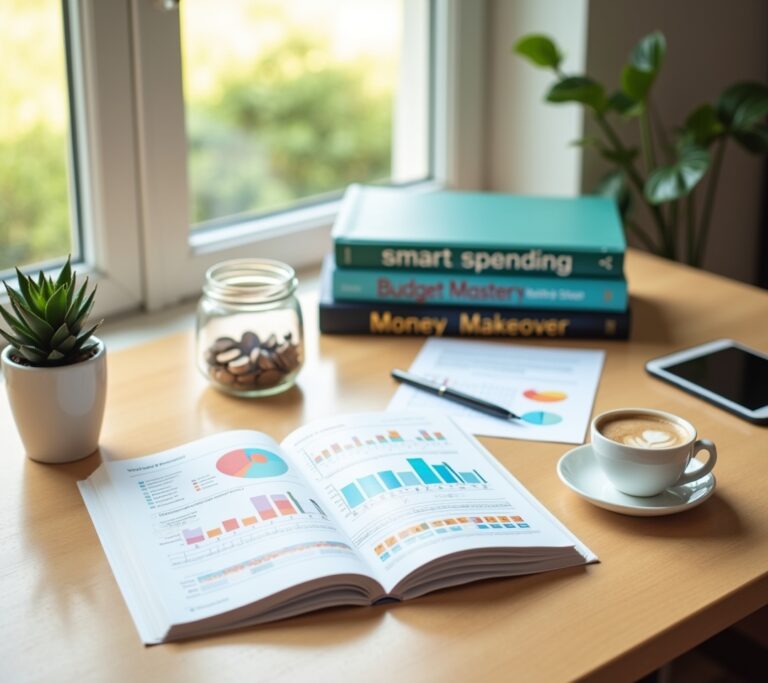Advertisements
Did you know that 65% of Americans don’t know how much they spent last month? I used to be one of them! Until I discovered the magic of budget vs actual spreadsheets, I was basically throwing darts blindfolded when it came to my finances.
Look, I get it. Budgeting sounds about as fun as watching paint dry. But here’s the thing – once you start tracking where your money actually goes versus where you think it goes, it’s kinda like finding hidden treasure in your own backyard.
What Even Is a Budget vs Actual Spreadsheet?

Okay, so picture this: you’ve got your budget (what you plan to spend) in one column and your actual spending in another. Simple, right? But man, the first time I did this, I nearly fell off my chair.
I thought I was spending maybe $200 on coffee each month. Turns out it was closer to $400! That’s when it hit me – I wasn’t just drinking coffee, I was basically drinking my retirement fund one latte at a time.
A budget vs actual spreadsheet is basically your financial report card. It shows you the difference (called variance) between what you planned and what really happened. And trust me, those variances can be real eye-openers.
Setting Up Your First Spreadsheet
When I started, I tried to get all fancy with it. Big mistake! I spent hours creating this complicated monster that I never wanted to look at again.
Here’s what actually works:
- Start with basic categories: housing, food, transportation, entertainment
- Use simple formulas (just subtraction, really)
- Pick a tool you’ll actually use – Google Sheets works great because it’s free and you can access it anywhere
- Update it weekly (not daily – you’ll burn out)
The key is making it so easy that you can’t make excuses. I keep mine super basic – just three columns for each category: budgeted amount, actual amount, and variance.
Common Mistakes That’ll Drive You Crazy
Oh boy, where do I start? First month, I forgot to include annual expenses like car insurance. When that bill hit, my beautiful spreadsheet looked like a crime scene.
Another goof-up was being too optimistic. I budgeted $150 for groceries thinking I’d become this meal-prep guru overnight. Reality check: I spent $400 and half of it was on takeout because I forgot lunch… again.
The biggest mistake though? Not accounting for those sneaky subscription services. Netflix, Spotify, that gym membership I haven’t used since January – they all add up quick!
Making Your Spreadsheet Actually Useful
Here’s where the rubber meets the road. Your variance analysis is goldmine for insights.
Positive variance (spending less than budgeted)? Awesome! But don’t just pat yourself on the back. Figure out why – maybe you can replicate it next month.
Negative variance is where the learning happens. I noticed I was always over on entertainment, so I started using the envelope method for fun money. Game changer!
Pro tip: Add a notes column for context. “Overspent on food – hosted Thanksgiving” makes way more sense than just seeing a scary red number.
Tools and Templates That Don’t Suck
You don’t need to reinvent the wheel here. There’s tons of free templates out there that’ll save you hours.
Microsoft’s budget templates are pretty solid if you’re an Excel person. But honestly? I just use a basic Google Sheets template and tweak it as I go.
Some folks swear by apps like Mint or YNAB, and they’re great if you want automation. But there’s something about manually entering numbers that makes you really feel that $8 smoothie purchase, you know?
Your Next Move Lies Ahead

Look, I’m not gonna lie – the first month is rough. You’ll probably want to quit when you see how off your estimates were. I sure did!
But stick with it. After three months, you’ll start seeing patterns. After six months, you’ll actually hit some of your targets. And after a year? You’ll wonder how you ever managed without it.
The beauty of a budget vs actual spreadsheet isn’t perfection – it’s progress. Every month you get a little better at predicting your spending, and every variance teaches you something about your habits.
Ready to take control of your financial future? Start simple, be honest with yourself, and remember – even us financial bloggers at Cashflow Zen started somewhere. Check out our other posts for more down-to-earth money tips that actually work in real life!




[…] And hey, if you want more tips on mastering your money (irregular income or not), check out other posts on Cashflow Zen. We’re all about finding that sweet spot between financial security and […]
[…] hey, if you’re looking for more money management tips and financial wisdom, check out other posts on Cashflow Zen – we’re all about finding that sweet spot between financial responsibility […]